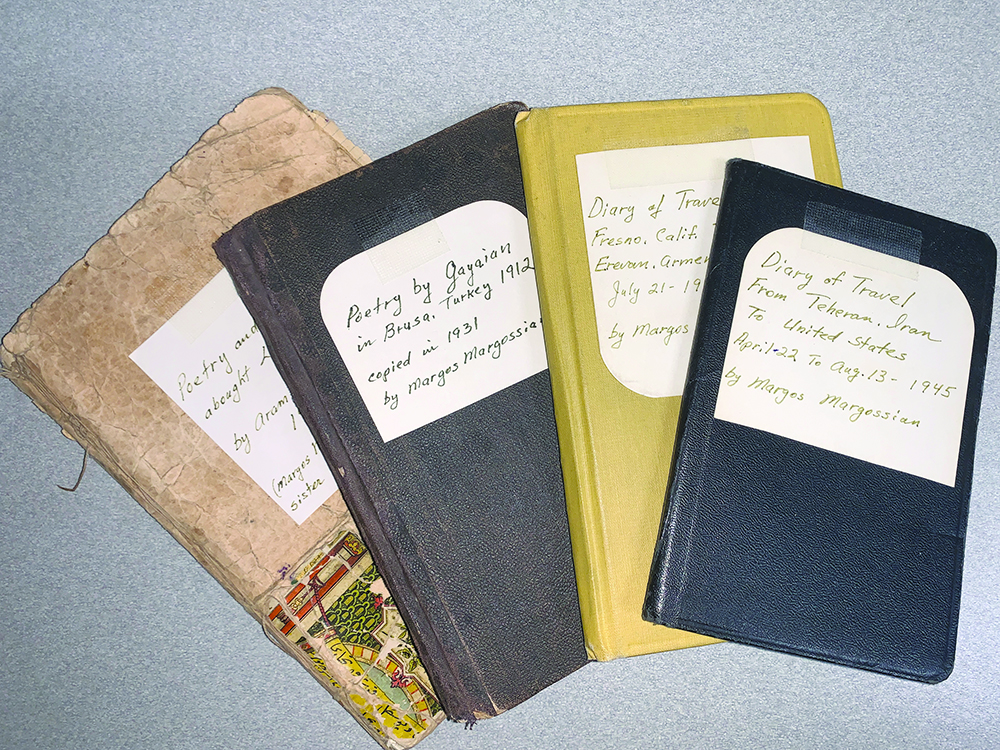
Sosse Baloian Yanez
Special to Hye Sharzhoom
The Armenian Studies Program has recently acquired some interesting unpublished works donated to the Armenian Studies Program Library and Archive.
One of the newest collections, “The Margossian Collection,” was donated by Knarik Clara Margossian, daughter of Margos Der Margossian. The collection contains Margos Margossian’s handwritten diaries and family history; two of his published books from the 1950s; a handwritten book of poetry he copied from H. T. Kayaian in Bursa, Turkey 1912; and a handwritten book of poetry and thoughts about life written by Aram Amadunian, the husband of Arshalous, Margossian’s older sister.
George Vahanian’s memoir, donated by his daughter, Mary Vahanian Anselmo, was also recently catalogued. It is a 59-page, handwritten copy about Vahanian’s life. He was born sometime between 1906 to 1908 in the small town of Hussenig. He was an Armenian Genocide survivor who emigrated to the United States in 1928 (according to his certificate of naturalization; see back of memoir). He writes, “this story sounds so unreal, so incredible that it seems fictional, that the truth is somewhat magnified. Believe me it is true. No part of it is distorted or fabricated.” (p. 35)
Another biography that was catalogued was Darkness to Dawn by Jack Kermoian. It is a 55-page work about Kermoian’s parents, Simone and Azneve. In his preface, Kermoian writes, “…this is a narrative of the story of my parents, how they met, how they escaped, their tribulations and almost accidental flight to America.”
Վարք Մեսրովբայ (The Life of Mesrop) written by the historian Koriun, is a new book on the shelves of the ASP Library. Koriun lived between 380-approximately and 450 AD and was a student of Mesrop Mashtots, the creator of the Armenian alphabet. Koriun has chronicled much of Mashtots’ life and work. The Life of Mashtots was translated by Stepan H. Banian and published in 1951.
The ASP Archive also has two new map additions: one titled, Վանի Ապրիլեան Հէրոսամարտը (The Heroic Battle of Van in April). The other is titled, Վան Քաղաք (The City of Van). Both maps have been scanned and are available to view online in the Armenian Studies Program Online Library Catalog at the following web link: https://opac.libraryworld.com/opac/home.php.
 Hye Sharzhoom Armenian Action
Hye Sharzhoom Armenian Action